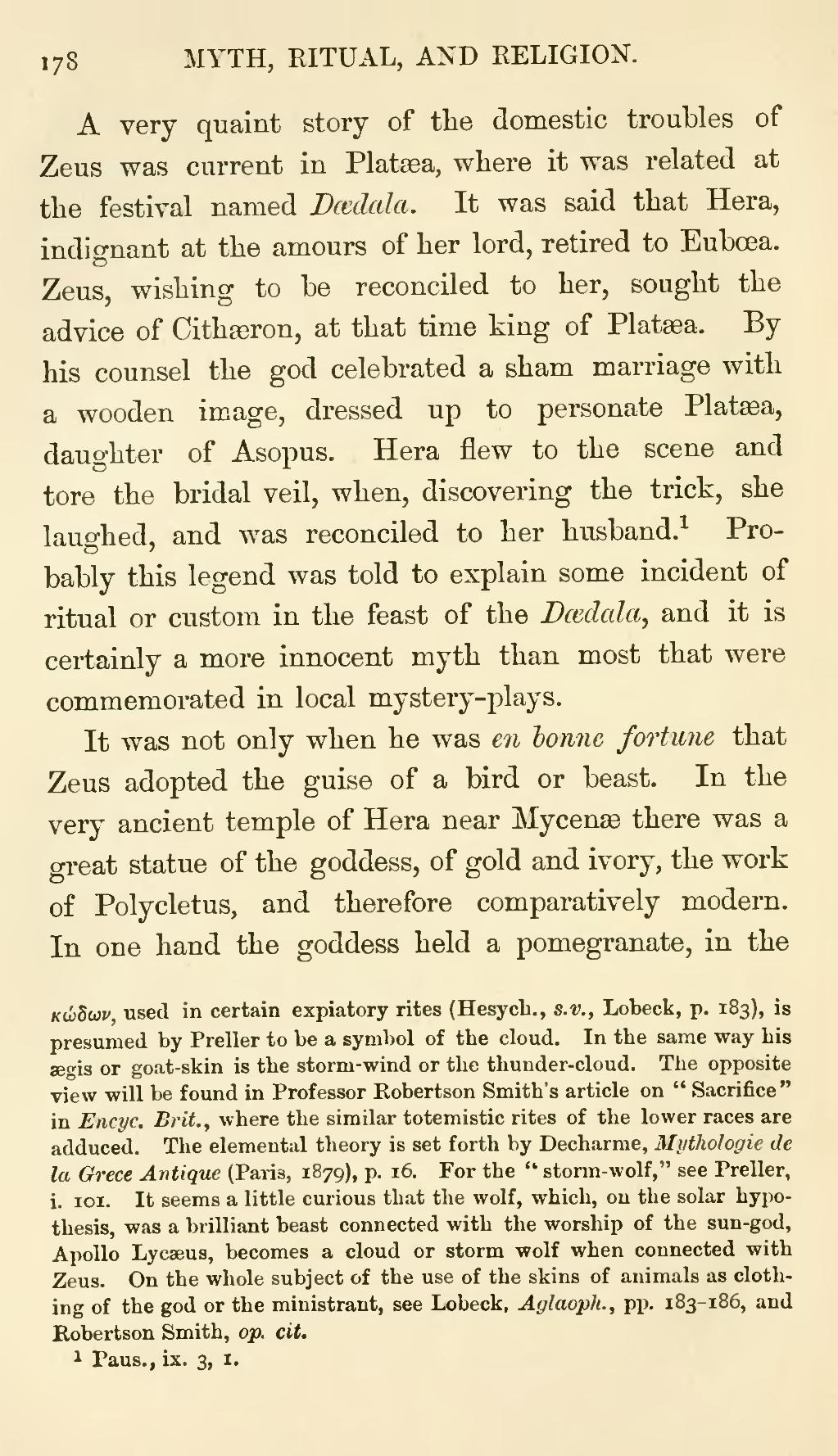A very quaint story of the domestic troubles of Zeus was current in Platæa, where it was related at the festival named Dædala. It was said that Hera, indignant at the amours of her lord, retired to Eubœa. Zeus, wishing to be reconciled to her, sought the advice of Cithæron, at that time king of Platæa. By his counsel the god celebrated a sham marriage with a wooden image, dressed up to personate Platæa, daughter of Asopus. Hera flew to the scene and tore the bridal veil, when, discovering the trick, she laughed, and was reconciled to her husband.[1] Probably this legend was told to explain some incident of ritual or custom in the feast of the Dædala, and it is certainly a more innocent myth than most that were commemorated in local mystery-plays.
It was not only when he was en bonne fortune that Zeus adopted the guise of a bird or beast. In the very ancient temple of Hera near Mycenæ there was a great statue of the goddess, of gold and ivory, the work of Polycletus, and therefore comparatively modern. In one hand the goddess held a pomegranate, in the
- ↑ Paus., ix. 3, 1.
κώδων, used in certain expiatory rites (Hesych., s.v., Lobeck, p. 183), is presumed by Preller to be a symbol of the cloud. In the same way his ægis or goat-skin is the storm-wind or the thunder-cloud. The opposite view will be found in Professor Robertson Smith's article on "Sacrifice" in Encyc. Brit., where the similar totemistic rites of the lower races are adduced. The elemental theory is set forth by Decharme, Mythologie de la Grece Antique (Paris, 1879), p. 16. For the "storm-wolf," see Preller, i. 100. It seems a little curious that the wolf, which, on the solar hypothesis, was a brilliant beast connected with the worship of the sun-god, Apollo Lycæus, becomes a cloud or storm wolf when connected with Zeus. On the whole subject of the use of the skins of animals as clothing of the god or the ministrant, see Lobeck, Aglaoph., pp. 183–186, and Robertson Smith, op. cit.
